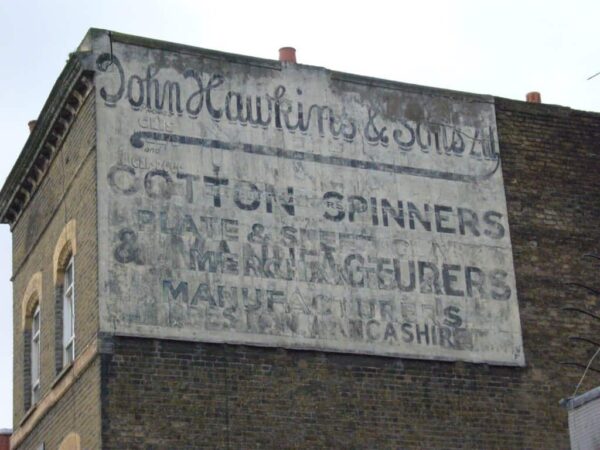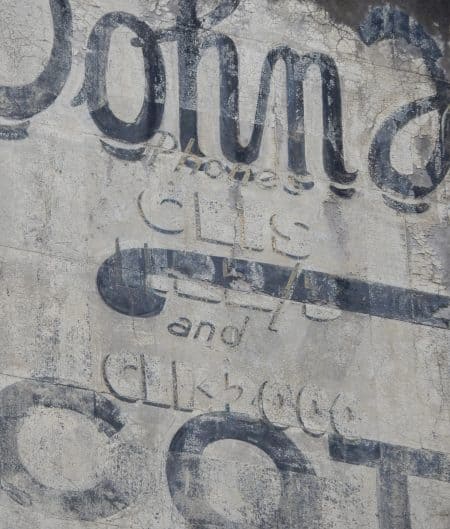25 Feb 2017
John Hawkins, Steeles & Chaney Signs
This ghostsign on Stoke Newington High Street comes at about the halfway point of my walking tour through the area. It is a palimpsest which has been well researched by Sébastien Ardouin. I recently took a couple of close-up photos, one of which has added to this information about the sign.
Sébastien references this old format phone number on his blog post, which has received a comment from former Steeles telephonist ‘Pebbles’. However, the CLIS format remains a mystery, as most phone formats followed a ‘Three Letters + Four Numbers’ format, as with the second number shown on the same sign. If anyone has an explanation for this then please share it.
Further down the left side of the sign, towards the bottom, is another phone number, this time with the name ‘Chaney’ painted in small letters above it. This was the signwriter that produced the sign and I decided to see if I could find anything about him/them at Hackney Archives.
I discovered that the signwriter’s full name was William Chaney and, when the Steeles sign was painted in the early 1940s, he was based at 71A Englefield Road in nearby De Beauvoir. This appears to have been an area with a high density of signwriters, see Silversigns and Ambridge Signs for just two others that I have discovered. Chaney Signs, as it was known, move to 497 Kingsland Road in 1949, closer to Dalston Junction, and now on the main road. Business was presumably going well and, in 1959, the company name changed to Chaney Advertising.
I do enjoy finding the signwriter’s details on ghostsigns. Through my work with Better Letters I’ve learned that attitudes towards signing signs varies. Some do so only with permission from the client, others are offended if they are forbidden from signing their work, and some deliberately don’t sign anything that they aren’t personally proud of.
As a small initial side investigation into changes to signwriter numbers over time I decided to see how many are listed within Stoke Newington’s N16 postcode. From 1911 to 1939 there are consistently three or four signwriters operating in the area. By 1949 this drops to two and then from 1956 onwards there is just a single writers plying his trade. I will soon be extending this methodology across a broader geography to paint a clearer picture of the extent to which the trade declined in the years following the war.





